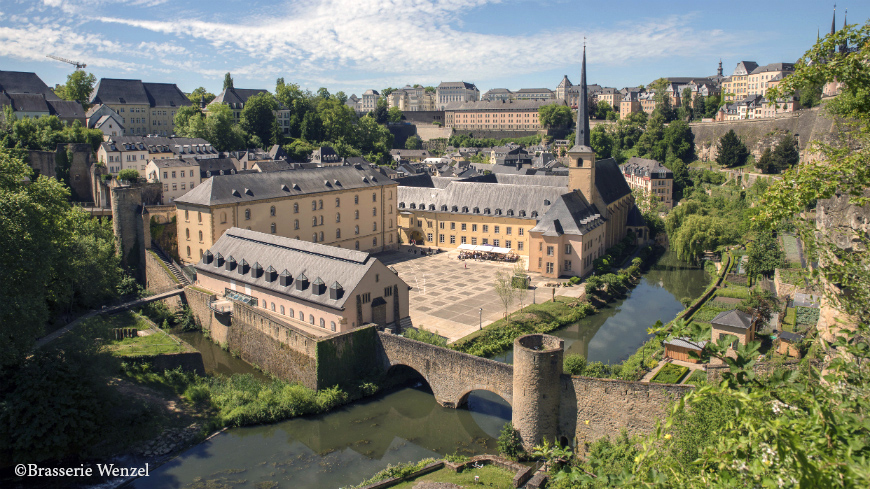Portuguese Association of Historic Gardens, AJH / Associação Portuguesa dos Jardins Históricos, AJH
- Cultural Route
-
- European Route of Historic Gardens
- Country
-
- Portugal
- Member Category
-
- Cultural Institution / NGO
- Heritage Site
- Member Status
- Network
- Year of Accession to Membership
- N/D
- Contact Details
- Rua Correnteza 1
PT-1400-077 Lisboa
Tel: +351 213 921 808
Website: www.jardinshistoricos.pt
Email: geral[at]jardinshistoricos.pt
Jardim Botânico de Lisboa (Lisbon Botanical Garden)
Rua da Escola Politécnica 56-58
PT-1250-102 Lisboa
Tel: +351 213 921 808
Website: www.museus.ulisboa.pt/pt-pt/jardim-botanico-lisboa
Email: geral[at]museus.ulisboa.pt
Jardim Botânico Tropical de Lisboa (Lisbon Tropical Botanical Garden)
Largo de Belém
PT-1400-209 Lisboa
Tel: +351 213 921 808
Website: www.museus.ulisboa.pt/pt-pt/jardim-botanico-tropical
Email: geral[at]museus.ulisboa.pt
Jardim do Palácio Fronteira (Garden of the Fronteira Palace)
Largo São Domingos de Benfica 1
PT-1500-554 Lisboa
Tel: +351 217 782 023 / +351 217 784 599
Website: www.fronteira-alorna.pt
Email: fundacao[at]fronteira-alorna.pt / fcfa-cultura@fronteira-alorna.pt
Jardins da Fundação Gulbenkian (Gardens of the Gubelkian Foundation)
Avenida de Berna, 45A
PT-1067-001 Lisboa
Tel: +351 21 78 30 00
Website: www.gulbenkian.pt/jardim
Email: info[at]gulbenkian.pt
Jardim Botânico da Ajuda (Ajuda Botanical Garden)
Calçada da Ajuda
PT-1300-010 Lisboa
Tel: +351 213 622 503
Website: www.isa.ulisboa.pt
Email: botanicoajuda[at]isa.ulisboa.pt
Parque de Serralves (Serralves Park)
Rua Dom João de Castro 210
PT-4150-417 Porto
Tel: +351 226 156 500
Website: www.serralves.pt
Email: serralves[at]serralves.pt
Jardins da Quinta da Aveleda (Gardens of Aveleda Estate)
Rua da Aveleda, 2
PT-4460-570 Penafiel
Tel: +351 255 718 200
Website: www.aveleda.com
Email: info[at]aveleda.pt
Jardins da Quinta da Brejoeira (Gardens of Brejoeira Estate)
Quinta da Brejoeira – Pinheiros
PT-4950-660 Monção
Tel: +351 251 666 129
Website: www.palaciodabrejoeira.pt
Email: claudiafernandes[at]palaciodabrejoeira.pt
Jardins da Quinta das Lágrimas (Gardens of Lágrimas Estate)
Rua António Augusto Gonçalves
PT-3041-901 Coimbra
Tel: +351 913 060 516 / +351 918 108 232
Website: www.quintadaslagrimas.pt
Email: geral[at]fundacaoinesdecastro.com
Mata Nacional do Buçaco (Buçaco National Forest)
Rua Porta do Buçaco 56
PT-3050-261 Luso
Tel: +351 231 937 000
Website: www.fmb.pt
Email: gabpresidencia[at]fmb.pt
Parque Terra Nostra (Terra Nostra Park)
Rua Padre José Jacinto Botelho 5
PT-9675-061 Furnas
Tel: +351 296 549 090
Website: www.parqueterranostra.com
Email: terra.nostrab[at]bensaude.pt
Jardim Botânico José do Canto (José do Canto Botanical Garden)
Rua José do Canto 9
PT-9500-076 Ponta Delgada
Tel: +351 296 650 310
Website: www.josedocanto.com
Email: casadojardim[at]josedocanto.com
- Contact Person
- N/D
- Main Town/Region
- Lisbon
- Site Town/Region
- Lisbon / Porto / Penafiel (Porto) / Pinheiros (Monção, Viana do Castelo) / Coimbra / Luso (Mealhada, Aveiro) / Furnas (Povoação, Azores) / Ponta Delgada (Azores)
- Main GPS Location
- 38.703333, -9.202402
- Site GPS Location
- 38.718433, -9.1485347 / 38.698905, -9.202179 / 38.740339, -9.1802079 / 38.737114, -9.153835 / 38.705898, -9.199159 / 41.159978, -8.659880 / 41.207931, -8.307126 / 42.041628, -8.494469 / 40.198194, -8.433719 / 40.378811, -8.370308 / 37.771965, -25.314880 / 37.746780, -25.669840
- UNESCO World Heritage List
- N/D
- European Heritage Label
- N/D
- Other Heritage Labels
- UNESCO World Heritage Tentative List:
Desert of the Discalced Carmelites and Built Ensemble of the Palace-Hotel in Bussaco (2017) (whc.unesco.org/en/tentativelists/6227)
- Description
- The Portuguese Association of Historic Gardens (AJH) is a non-profit association aimed at promoting historic gardens and landscapes in Portugal. AJH represents many Portuguese sites along the European Route of Historic Gardens.
The Lisbon Botanical Garden (Jardim Botânico de Lisboa) is a scientific garden that was designed in the mid-19th century as complement to the teaching and research of botany at the Polytechnic School. Inaugurated in 1878, the Botanical Garden of Lisbon is now integrated into the National Museum of Natural History and Science (Museu Nacional de História Natural e da Ciência). Systematic collections serve various branches of botanical research, demonstrating the great diversity of plant forms and multiple ecological processes, while at the same time representing an important and effective means of conserving endangered plants (www.europeanhistoricgardens.eu/en/portfolio-item/lisbon-botanical-garden).
The Tropical Botanical Garden (Jardim Botânico Tropical de Lisboa) was created in 1906 as a ”Colonial Garde”, during the time of King Carlos I, with the goal of teaching tropical agronomy as a complement to the Agronomy and Veterinary Institute of Lisbon. The garden provides examples of the richness and biodiversity of the tropical and sub-tropical regions from a variety of different places on Earth though one finds here a few species from temperate latitudes Since 2015, the management of the garden has been under the National Museum of Natural History and Science (www.europeanhistoricgardens.eu/en/portfolio-item/lisbon-tropical-botanical-garden).
The Garden of the Fronteira Palace (Jardim do Palácio Fronteira) was built during the years 1668-1670 by the 1st Marquis of Fronteira, as a celebration of the victory of the Portuguese armies against Spain, in the wars of Restoration of Independence (1640-1668), and the iconographical programme of the Garden is a celebration of this event. The extensive use of panels in azulejos contributes to the richness of a programme allusive to war and peace, as well as to the exaltation of Portuguese monarchy and identity (www.europeanhistoricgardens.eu/en/portfolio-item/garden-of-the-fronteira-palace).
The Gardens of the Gubelkian Foundation, a project of the 1960s, by Gonçalo Ribeiro Telles and António Facco Viana Barreto, is the most iconic garden of the modern movement in Portugal. It is characterized by an innovative design that reflects the concept of landscape defended by the first generation of portuguese landscape architects, giving rise to a new way of designing gardens in Portugal, closer to portuguese culture, the ecology of the Mediterranean Landscape and a design which works with the masses of vegetation and light to build ambiente (www.europeanhistoricgardens.eu/en/portfolio-item/gardens-of-the-gulbenkian-foudation).
Inaugurated in 1768, the Ajuda Botanical Garden (Jardim Botânico da Ajuda) is the oldest botanical garden in Portugal. In the late 18th century, botanical missions to Portugal’s overseas colonies greatly enriched the collection, and it has been open to the public since 1910 (www.europeanhistoricgardens.eu/en/portfolio-item/ajuda-botanical-garden).
The origin of the Serralves Park (Parque de Serralves) dates back to 1923 and its history can be divided into three key periods: the contours of the garden at the end of the 19th century, the garden designed by Jacques Gréber for Serralves Villa, and the landscaping of the Museum of Contemporary Art. The Serralves Park, as designed by Jacques Gréber, was considered to be one of the first examples of gardening art in Portugal of the first half of the twentieth century, and was the only garden built during this period by a private individual in Portugal, on the basis of a landscape architecture project (www.europeanhistoricgardens.eu/en/portfolio-item/park-of-pena-2).
The Gardens of Aveleda Estate (Jardins da Quinta da Aveleda) as we know them started to be constructed in 1870 by Manuel Pedro Guedes (1837-1899). Since then, five generations of the family keep adding new features as time goes by. The park is within the Aveleda Estate, with more than 150 hectares, on the left bank of river Sousa, most of which planted with vines (www.europeanhistoricgardens.eu/en/portfolio-item/gardens-of-aveleda-estate).
Brejoeira Estate is located on the left bank of the river Minho, which borders Portugal and the Spain. Luis Pereira Velho Moscoso (1767-1837), nobleman of the royal house, began the construction of the neoclassical palace and its garden at the beginning of the 19th century. The house and its park are surrounded by extensive vineyards producing the famous wine “Alvarinho“ (www.europeanhistoricgardens.eu/en/portfolio-item/gardens-of-brejoeira-estate).
The origin of Lágrimas Estate (Quinta das Lágrimas) is uncertain: it was a hunting ground for the Portuguese royal family and later belonged to the University of Coimbra and a religious order. It was acquired by the Osório Cabral de Castro family in the 18th century and the first noble palace was then built. The Gardens of Lágrimas Estate are known to be the setting for the forbidden romance between King Pedro I and Inês de Castro of Portuguese literature (www.europeanhistoricgardens.eu/en/portfolio-item/gardens-of-lagrimas-estate).
The history of Buçaco Forest (Mata do Buçaco) dates to the 17th century, when the Carmelite Order selected this site to install its first and only retreat in Portuguese territory. The Carmelite treated the forest as a garden. They built fountains, hermitage housing scattered in the woods and a monumental Via Crucis. In addition to these architectural elements, the monks introduced some arboreal species such as cedar, with the intention to give Buçaco an appearance similar to that of Jerusalem, creating therefore a sacred forest. At the end of the 19th century much of the convent was demolished to make way for an extravagant neo-Manueline palace, conceived as a retreat for the Portuguese royal family (www.europeanhistoricgardens.eu/en/portfolio-item/bussaco-forest).
Located in the center of the Furnas valley, the Terra Nostra Park (Parque Terra Nostra) is one of the largest and oldest botanical gardens in the Azores, whose history is linked to the evolution of Furnas as a thermal and tourist destination. The mansion and its romantic garden were opened at the end of 18th century by then-US Consul Thomas Hickling. Terra Nostra Park features today a flora typical of the Azores, as well as numerous plants native to countries with climates that are completely different to that of Furnas (www.europeanhistoricgardens.eu/en/portfolio-item/terra-nostra-park).
The José do Canto Botanical Garden (Jardim Botânico José do Canto) possesses large collections and beds with plants of major historical and cultural value. José do Canto (1820-1898), a cultured wealthy man and a nature lover, turned his garden in Ponta Delgada into an outstanding space for the acclimation of thousands of species. He commissioned the project of the Park to David Mocatta (1806-1882) in London, a man considered, at the time, very tasteful and influenced by his long years of study in Italy. Almost all of the trees planted in this garden – due to the richness of soil and climate -developed very well, and many of them in a spectacular way (www.europeanhistoricgardens.eu/en/portfolio-item/jose-do-canto-botanical-garden).
- Logos/Pictures








